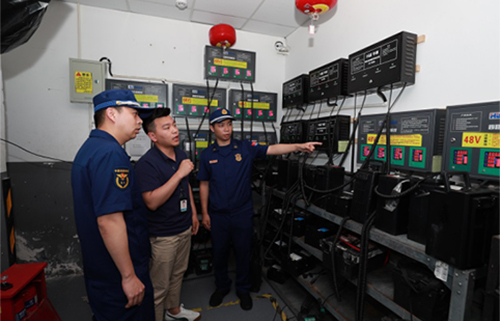Welcome to the relevant industries to call us, we will work together with you in good faith, common development! We sincerely welcome new and old friends to call us for guidance!
Our hand in hand, will be for your product to bring the deduction.

The common problems of lithium battery protection board are as follows:
Problem 1: Can not charge
Common causes:
1, the battery cell 0V, the protection board does not support 0V charging, resulting in no charging (a combination of battery 0V will also lead to no charging). For combined batteries, the loss of a signal cable will also cause no charge
2, after low-voltage hibernation of the battery, because the pre-charging flow is small (generally 1/10 of the conventional current), this time needs to activate the charging time is long, and customers and consumers misjudge;
3, temperature protection: For the protection board with temperature protection, if the ambient temperature is lower than or higher than the set charging temperature range (such as 0~45 ° C), the charging pin is closed at this time, and the charge is not charged. For the following with a temperature switch, sometimes the inside shrapnel switch does not recover after the action, resulting in no charging;
4, the charging current is too large, resulting in charging overcurrent protection (for the protection board with charging overcurrent protection);
5. The charging MOS inside the protection board is damaged or other electronic components such as resistance capacitor fuses are damaged;
6, electrostatic interference, resulting in IC can not work properly, MOS pin can not open normally.

Problem 2: Can not release power or can not turn on the machine
1. The discharge MOS inside the protection board is damaged or the resistance capacitor fuse and other electronic components are damaged
2, the starting current is too large, resulting in instantaneous overcurrent protection, battery output protection (especially for products with motors or Bluetooth speakers). There is also a starting current in the critical value of the protection board, the sample was not found, the bulk found that some can not release electricity or start the phenomenon, this is more hidden, pay special attention to (especially at low pressure is easy to appear)
3, temperature protection: For the protection board with temperature protection, if the ambient temperature is higher than the set temperature range (such as >60 ° C), this time the discharge pin is closed.
One of the external temperature switches failed and didn't open
4, the battery is not activated before shipment, the terminal line contact is poor or the internal nickel tape welding
5, the battery has been shelved for too long, underpower or the internal pressure difference of the battery is too large (the total external voltage is normal, but the voltage of a certain cell is too low, and the protection is over-discharged once started)
6, electrostatic interference, resulting in IC can not work normally, discharge MOS pin can not open normally
7. After the equipment stops abnormally or stops rotating, the voltage is normal but the machine cannot be started normally
This is mainly the case that the protection board uses an IC that is not recovered from over-release, and the battery enters the over-release protection hibernation mode, requiring the load to be disconnected or activated by charging.
In this case, if you want to boot normally, you need to put the self-recovery IC)
Problem 3: Short discharge time (battery)
1, the bulk product capacity is low or the internal resistance is high, resulting in short time
2, poor battery cycle performance or poor consistency, resulting in low battery capacity after a period of time
3, the temperature is too low, resulting in low capacity; If the temperature is too high, the internal temperature switch of the protection board is protected in advance, resulting in short discharge time
4. The battery material is replaced midway, the shutdown voltage of the customer's product is not correctly matched, and the capacity is not fully released, resulting in short discharge time of the customer's product
5, the battery is not fully charged (A: the customer changed the charger, the voltage does not match, the lack of constant voltage charging; B: The combined battery has a pressure difference resulting in insufficient charge)
Question 4: Other questions
1, the customer's product charging indicator alarm or do not turn the light (the main reason is that after a period of battery cycle, the battery charge is not satisfied, can not meet the customer's indicator light turning requirements)
2. The battery is powered off too quickly
A: Customer motherboard power consumption, solution: ask the customer to improve the motherboard or add a hard switch, turn off the battery output when not in use, to avoid the motherboard battery power consumption)
B: Our battery consumes too much power
|
Last: Saic, Tesla resume production!
Next: Industrial and commercial roof photovoltaic, to see the case of more than 3 years! |
Return |
Recommended news

On June 18, 2021, LG New Energy Asia Marketing General Manager revealed at the 2021 China Automotive Forum that LG New Energy is de…

Two-wheeled electric vehicles are a means of transportation in many Peoples Daily lives, but accidents are also common in the proce…